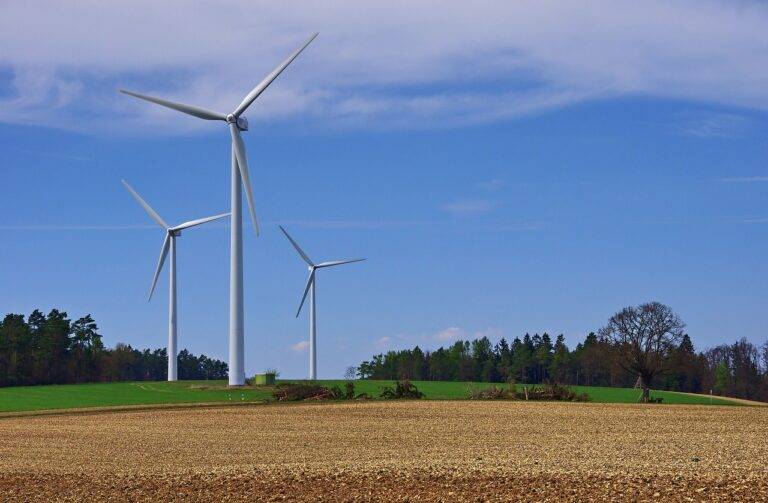The Role of AI in Climate Change Mitigation Strategies
Climate change is a pressing global issue that is fundamentally altering our planet’s climate patterns. The increased concentration of greenhouse gases in the atmosphere, primarily due to human activities, is causing temperatures to rise, leading to shifts in weather patterns and more frequent extreme weather events such as hurricanes, floods, and droughts. These changes have far-reaching consequences for ecosystems, agriculture, and human populations around the world, posing significant challenges to sustainable development and overall well-being.
The impacts of climate change are already being felt in various regions worldwide. Glaciers are melting at an alarming rate, sea levels are rising, and ocean acidification is threatening marine life. Additionally, biodiversity is under threat as shifts in temperature and precipitation patterns disrupt ecosystems and endanger plant and animal species. The socio-economic impacts of climate change are equally severe, with vulnerable communities facing food insecurity, water scarcity, and increased risks of displacement and conflict. Addressing climate change and its impacts requires urgent and coordinated global action to mitigate greenhouse gas emissions and build resilience to the changing climate.
Understanding the Potential of Artificial Intelligence in Climate Change Mitigation
Artificial intelligence (AI) holds immense promise in the realm of climate change mitigation. By leveraging machine learning algorithms and big data analytics, AI has the potential to revolutionize the way we approach environmental challenges. One key area where AI can make a significant impact is in enhancing climate modeling and prediction capabilities. The ability of AI to sift through vast amounts of data and identify complex patterns can help to improve the accuracy of climate models and provide policymakers with more reliable forecasts for decision-making.
Furthermore, AI technologies can be instrumental in optimizing resource allocation and energy efficiency. Through advanced algorithms, AI can help in designing smart grids that efficiently distribute renewable energy sources and reduce carbon emissions. By enabling real-time monitoring and control of energy usage, AI can contribute to a more sustainable and resilient energy infrastructure. Overall, the integration of AI in climate change mitigation efforts has the potential to drive innovation and catalyze transformative solutions for a more sustainable future.
• AI can enhance climate modeling and prediction capabilities
• AI can improve the accuracy of climate models for better decision-making
• AI can optimize resource allocation and energy efficiency
• AI can help design smart grids for efficient distribution of renewable energy sources
• AI enables real-time monitoring and control of energy usage
• Integration of AI in climate change mitigation drives innovation and transformative solutions
Applications of AI in Renewable Energy Development
Renewable energy plays a crucial role in addressing the challenges of climate change, but it is not without its limitations. This is where artificial intelligence (AI) comes in, offering innovative solutions to optimize renewable energy systems. AI can enhance the efficiency and reliability of renewable energy sources such as solar and wind power by analyzing vast amounts of data in real-time. By utilizing AI algorithms, renewable energy developers can predict energy production, optimize maintenance schedules, and improve overall performance.
Additionally, AI can enable smarter energy management systems that balance supply and demand more effectively. Through advanced forecasting techniques, AI can help integrate renewable energy sources into the existing power grid seamlessly. This can lead to a more stable and resilient energy infrastructure, reducing dependency on fossil fuels and lowering carbon emissions. The combination of AI and renewable energy holds great promise in accelerating the global transition to a sustainable energy future.
What is the relationship between climate change and renewable energy development?
Climate change is driven by the excessive use of fossil fuels, which release greenhouse gases into the atmosphere. Renewable energy sources, such as solar and wind power, offer a clean alternative to fossil fuels and can help mitigate climate change.
How can artificial intelligence help in climate change mitigation?
Artificial intelligence can analyze vast amounts of data to optimize renewable energy systems, improve energy efficiency, and predict climate patterns. This can help in making informed decisions to reduce greenhouse gas emissions and combat climate change.
What are some specific applications of AI in renewable energy development?
AI can be used to optimize the design and operation of wind farms and solar panels, predict energy demand, forecast weather patterns for better energy production, and automate energy management systems. These applications can help increase the efficiency and reliability of renewable energy sources.
How can AI contribute to reaching renewable energy targets?
By leveraging AI technologies, renewable energy developers can optimize the performance of energy systems, increase the integration of renewable sources into the grid, and reduce costs associated with energy production. This can help accelerate the transition to a sustainable energy future and meet renewable energy targets.





